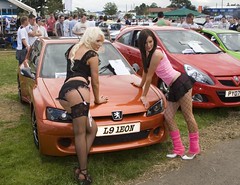Concept cars design are prototypes of ideal cars. They are usually showcased for public exhibition. In the fiercely competitive world of car manufacturing, manufacturers are constantly designing and making special cars to show their ability to design and manufacture highly useful cars, built ahead of the times. As the name goes, such cars are purely conceptual in nature.
Why are concept cars conceptual?
Manufacturers of such cars do not go for mass production. This is because prototype cars are non-traditional and are made of very expensive materials or materials like paper or carbon fiber, mass production of which is not feasible. The designs and layouts of such cars are too fanciful to be implemented practically.
Purpose of designing concept cars:
Concept cars are made combining the best of modern technology with the highly effective and time-tested layouts of cars from the past. Reactions to such cars enable automobile companies feel the pulse of the market. The fanciness of the cars set the pace for future designs. Manufacturers come to know whether a car is acceptable or requires a few modifications before going to production. Cars which evince little interest are usually destroyed. Those which catch the imagination of the public are preserved as a strategy to expand the list of company patents.




















